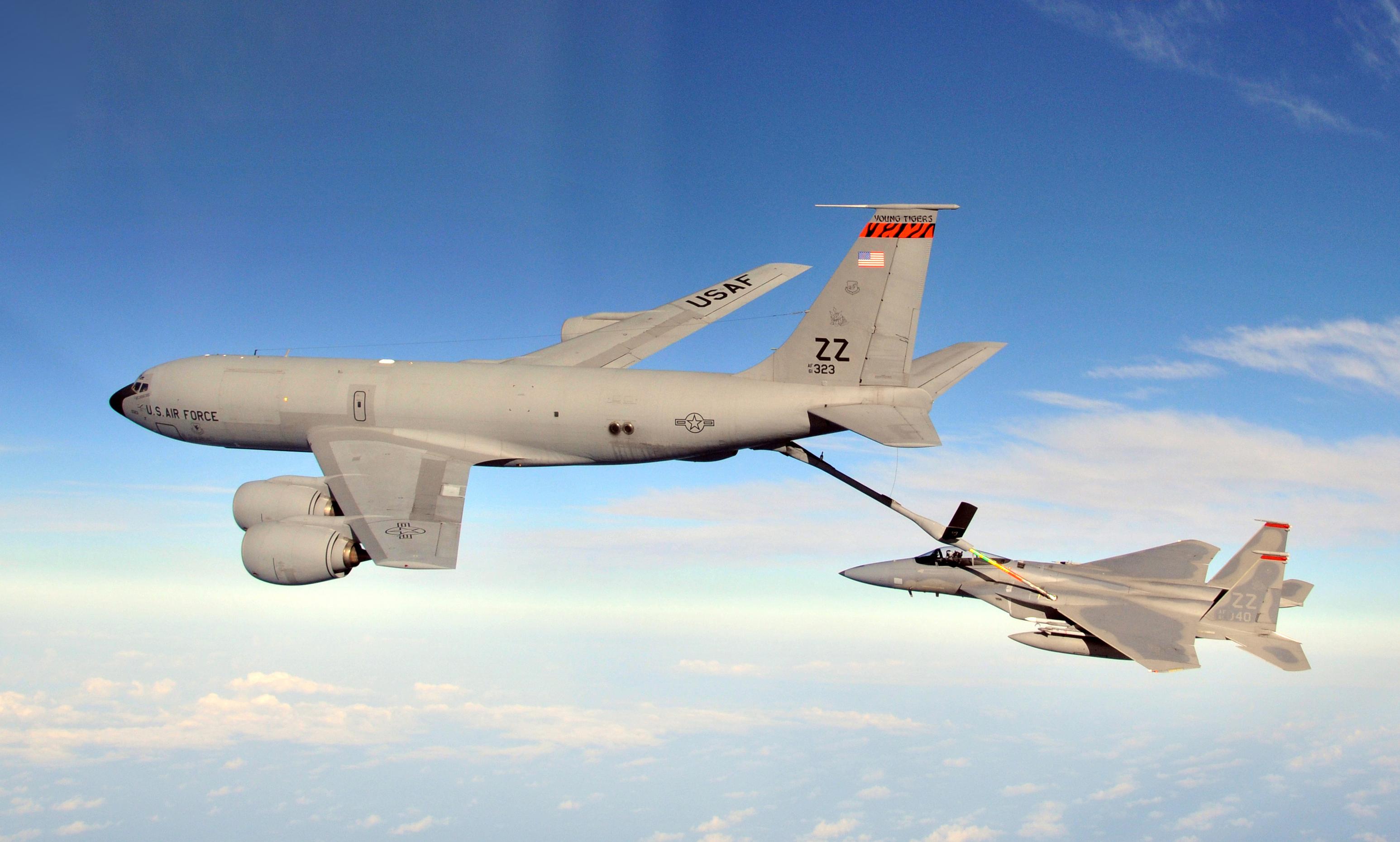
Boeing KC-135 Stratotanker
The Boeing KC-135 Stratotanker is an American military aerial refueling tanker aircraft that was developed from the Boeing 367-80 prototype, alongside the Boeing 707 airliner. It has a narrower fuselage and is shorter than the 707. Boeing gave the aircraft the internal designation of Model 717.[3] The KC-135 was the United States Air Force (USAF)'s first jet-powered refueling tanker and replaced the KC-97 Stratofreighter. The KC-135 was initially tasked with refueling strategic bombers, but it was used extensively in the Vietnam War and later conflicts such as Operation Desert Storm to extend the range and endurance of US tactical fighters and bombers.
The KC-135 entered service with the USAF in 1957; it is one of nine military fixed-wing aircraft with over 60 years of continuous service[4] with its original operator. The KC-135 is supplemented by the larger McDonnell Douglas KC-10 Extender. Studies have concluded that many of the aircraft could be flown until 2030, although maintenance costs have greatly increased. The KC-135 is to be partially replaced by the Boeing KC-46 Pegasus.
Development[edit]
Background[edit]
Starting in 1950 the USAF operated the world's first production aerial tanker, the Boeing KC-97 Stratofreighter, a gasoline fueled piston-engined Boeing Stratocruiser (USAF designation C-97 Stratofreighter) with a Boeing-developed flying boom and extra kerosene (jet fuel) tanks feeding the boom. The Stratocruiser airliner itself was developed from the Boeing B-29 Superfortress bomber after World War II. In the KC-97, the mixed gasoline/kerosene fuel system was clearly not desirable and it was obvious that a jet-powered tanker aircraft would be the next development, having a single type of fuel for both its own engines and for passing to receiver aircraft. The 230 mph (370 km/h) cruise speed of the slower, piston-engined KC-97 was also a serious issue, as using it as an aerial tanker forced the newer jet-powered military aircraft to slow down to mate with the tanker's boom.
Like its sibling, the commercial Boeing 707 jet airliner, the KC-135 was derived from the Boeing 367-80 jet transport "proof of concept" demonstrator, which was commonly called the "Dash-80". The KC-135 is similar in appearance to the 707, but has a narrower fuselage and is shorter than the 707. The KC-135 predates the 707, and is structurally quite different from the civilian airliner. Boeing gave the future KC-135 tanker the initial designation Model 717.[5]
Related development
Aircraft of comparable role, configuration, and era